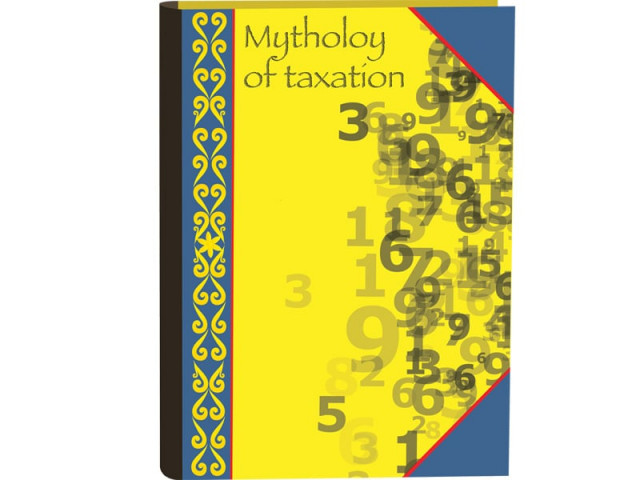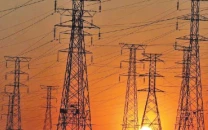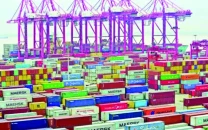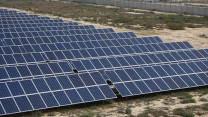Setting the record straight: Six myths about taxation in Pakistan
The salaried class is not the largest contributor to taxes, but it is the most consistent.

As budget season approaches, a number of myths about taxation in Pakistan can be dispelled using publicly available resources. A reading of the World Bank’s comprehensive 2009 study “Pakistan Tax Policy Report: Tapping Tax Bases for Development”, and data accessed from the websites of the Federal Board of Revenue (FBR), State Bank of Pakistan, and other official sources do the job in exposing some myths about taxation in Pakistan.
Myth No. 1: The economy cannot take the burden of more taxation
Pakistan collects a relatively small proportion of its GDP as tax compared to most other countries at its level of development. Our current tax-GDP ratio is under 12 per cent, while India’s approaches 18 per cent. There is an argument that during an economic down-turn government should tax less and spend more through increasing its borrowings. This works well when borrowing is inexpensive and debt levels are low.
Myth No. 2: Government does not live within its means
Governments have been successful in raising sufficient revenues to meet expenditures other than debt repayments. Debt repayment tips us into a budget deficit. The longest stretch of fiscal irresponsibility was in the 1980s when deficits and debts piled up. Since the mid-1990s the only major case of non-debt repayment spending exceeding revenues was in 2007-2008. This means that the Pakistani state has mostly lived within its means for nearly two decades, but has not raised sufficient revenue to pay off earlier debts. Living within means does not mean, of course, that Pakistan spends what it ought to on education, health, social protection or infrastructure.
Myth No. 3: Salaried classes bear the brunt
Taxes on salaried incomes account for fewer than 2 per cent of FBR collections. Non-salaried income taxes including withholding taxes make up 10 per cent of taxes, corporate income tax 26 per cent, sales tax 30 per cent, custom duties 14 per cent and federal excises 9 per cent. It is true that salaried formal sector employees fall more easily into the tax net than others, and that there is a need to expand tax registration and compliance among the self-employed. The fact that salaried classes are over-represented among newspaper readers probably contributes to the disproportionate expression of their outrage.
Myth No. 4: Agriculture is the favoured sector
Agricultural income is not exempt from taxation. It is a provincial tax and is poorly implemented as are most provincial taxes, such as property taxes. The weakness of provincial tax administration is a key constraint to taxing agriculture and this needs fixing anyway, particularly since the 18th Amendment. Agriculture is subsidised in most countries, hence international comparisons of the burden of taxation on agriculture typically measure the element of net subsidy. Pakistan has historically provided one of the lower rates of net subsidy on its agricultural sector – lower than Indonesia, India, Malaysia and China.
Myth No. 5: Government milks businesses for cash
Corporate income tax contributes over a quarter of total FBR collection and transactions conducted by big firms account for a large proportion of indirect tax collection. But the World Bank study which estimated that non-compliance leads to a loss of 800 billion rupees to the exchequer also showed that over half this loss was due to corporate income tax evasion. Two-fifths of the firms under the Securities and Exchange Commission of Pakistan are not registered with the FBR. Textiles which enjoy exemption from indirect taxes on inputs make a negligible contribution to the exchequer. They join traders to oppose sales tax reforms which will require documentation of transactions, which in turn might improve income tax enforcement. Very big businesses which are already tax agents support such tax reforms.
Myth No. 6: Military governments are better at raising revenues than civilians
The only period of sustained rise in the tax-GDP ratio was in the 1970s under Bhutto, which was followed by a dramatic decline from 1980 onwards under Zia. Benazir’s second government registered rises in tax-GDP ratios which were not sustained. The tax-GDP ratio reversed direction every two years under Musharraf. The present civilian government has overseen rising tax-GDP ratios thus far. There is no evidence of military government performing better than civilians - in fact they seem to perform a little worse.
The writers work with the Collective for Social Science Research based in Karachi
Published in The Express Tribune, May 30th, 2011.


















COMMENTS
Comments are moderated and generally will be posted if they are on-topic and not abusive.
For more information, please see our Comments FAQ